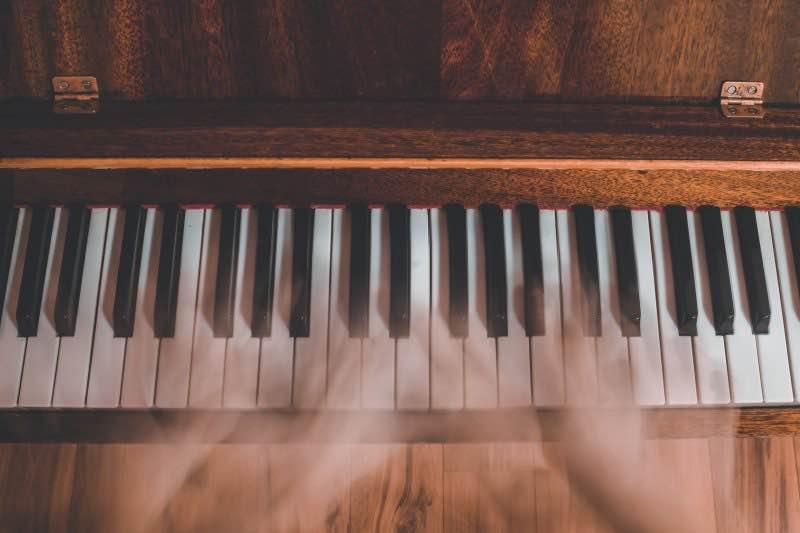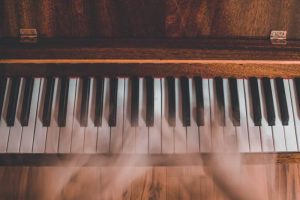The piano is a beautiful instrument to behold, but its creation remains a mystery for many of us. Here is a quick look at how modern pianos are made, including their various features and parts. Bear in mind that there are many details of craftsmanship that vary by maker. Below is an overview of how pianos are made.
Materials
Pianos are constructed from various woods, metals, and softer items like felt. The felt is used on the dampers (string mutes) and the tips of the hammers. The three pedals–soft, sostenuto, and sustain–are made of brass, and the pedal apparatus is encased in a wooded pedal support structure.
The type of wood used on the exterior of a piano depends on the preferences of the manufacturer, as well market availability, and other factors such as cost. Birch, maple, fir, oak, mahogany, and poplar are common choices. High-end pianos sometimes use exotic woods like walnut, cherry, bubinga, and rosewood for the cabinet. These fancy woods come with a high price tag.
At Steinway & Sons, they dry all their wood for over two years to ensure instrument durability. Most companies dry their wood to guard against warping and cracking, but budget piano makers may not dry their wood for as long as Steinway does.
Inner and Outer Rims
Piano construction begins with the rims. On one side, there is a bend or curve to the piano. On the other side, the rim is straight. Wooden veneers are glued together to form both the piano’s outer and inner rim. The lamination process is similar for both rims.
The number of layers used to create piano rims varies depending on the make and model of the instrument. Depending on the piano, there are 6 to 17 layers of wood used to form the two rims. To fuse the rims, the wood is heated, often using a process known as “high-frequency induction,” which glues the inner and outer rims together. Hydraulics are often employed to bend and mold the concave outer rim. Once this process is done, the shell or case of the piano has been created.
Next, let’s look at the inside, or “guts,” of the piano. Note: the front end referenced below is closest to the seated pianist; the far end is farthest away from the performer.
Soundboard
The soundboard acts as a diaphragm, amplifying the piano strings as they vibrate. The soundboard sits on top of the inner rim. All high-end pianos use planks of spruce glued together to form the soundboard. Steinway uses Sitka spruce but other spruce varieties such as Yezo, European, Adirondack, and Canadian spruce are employed by other companies.
Bridges
Next, there are two bridges (wooden blocks) that are glued on top of the soundboard. The strings arc over the bridges from the pin block (see below) to the hitch pins at the far end of the instrument. The middle and higher range strings are strung parallel to one another, while a row of fatter, lower strings are mounted above, crisscrossing the higher pitched strings. The longer bridge connects (via bridge pins) the middle and higher-pitched strings, while the short bridge connects to the strings of the lower range. Without these bridges, the strings would not come into contact with the soundboard to create such a beautiful resonance.
Frame
The frame is forged out of heavy cast iron. One of the most significant differences between the modern piano and early models is the use of this large iron plate. This frame is placed on top of the soundboard and its main job is to support string tension. String tension can exceed 20 tons, which is more than any other stringed instrument. The agraffes and capo d’astro are features in the frame, which level and space the strings, and contribute to the so-called “speaking length” of the strings on the front end of the piano.
Pin Block and Tuning Pins
The pin block sits beneath the frame, and this essential piece of wood keeps the piano in tune. Pin blocks must be very strong to maintain the force of the string tension. Therefore, pin blocks are usually made from northern rock maple. Tuning pins are inserted into the pin block to adjust the tension, and therefore the pitch, of a string. To tune the piano, the technician torques each pin tighter or looser as needed.
Strings and Hammers
A piano has 88 keys and hammers, and the facia of each key has been synthetic since the 1960s. Most pianos use 230 strings and they must be strung very meticulously. For the middle and high ranges, three strings are used per key (or per pitch). As you descend the keyboard, the number of strings decreases to two, and then, eventually, to one string in the lowest range.
Piano strings are tempered out of high carbon steel with copper coverings wrapped around the lower strings so that they are heavier and vibrate slower. Felt hammers on wooded shanks (dowels) are placed underneath or behind the strings. When a key is pressed, a series of moving parts called the “action” work together so that the hammer strikes the strings in a smooth, percussive manner. During construction, strings are coiled 3 or 4 times around each tuning pin so that they don’t loosen.
Wood Finishes
Pianos are also considered elegant furniture, and the wood finish on the case is an important feature for many enthusiasts. Each manufacturer has its own slightly different custom finishes. The standard concert piano you may see in a music hall features a satin ebony luster. However, there are many other options for piano buyers including matte finishes, which are less polished and more light-absorbing. Various other brown shades exist too. And some pianos, like the ones used by John Lennon and Elton John, are even white. Either way, the finish is the final step in piano construction.
Eric Starr

